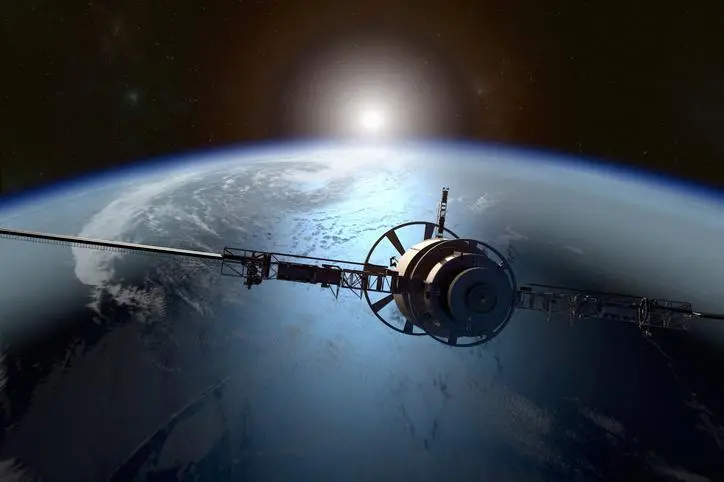PHOTO
Last November, unrelated to the Ukraine situation, Russia blew up one of its old communications satellites. The month before, China tested a new hypersonic anti-satellite missile. In March 2019, India destroyed a “low Earth orbit” satellite from the ground, becoming the fourth country to do so. Indeed, the US, Russia and China have been destroying satellites (so far only their own) from the Earth’s surface for some time.
For the last few years, however, space has increasingly become a focus of military interest by the big powers. In December 2019, the Trump administration created the US Space Force, separating it from the US Air Force; it now regularly conducts “Space Flag” training/simulation exercises, where missile-satellite attack scenarios are tested. And in July 2019, French President Emmanuel Macron instructed his government to create a “space high command” to “protect French satellites” from various kinds of attack.
It is widely believed that, in the near future, some of the first facilities to be targeted, destroyed or incapacitated will be satellites, both remote sensing (those that take close-up, high-resolution images of ground areas) and communication (those that transfer information between fixed installations or mobile devices).
Attacks can be of various kinds. One is destruction by missiles such as the above. Another is “jamming,” whereby the satellite’s electronics and signals are jumbled or corrupted, thus rendering the satellite useless. A similar attack is “spoofing,” which takes place on the ground, where one station sends out a fake signal to trick a target into believing it has received the satellite signal it was seeking and expecting. And another type of attack is the blinding with lasers of remote sensing (or imaging, i.e., spying) satellites passing overhead, preventing them from taking photos of areas that are of strategic importance (a military base, a site of military exercises or operations, etc.).
All these types of attack (electronic or laser) are being tested successfully and quite frequently. Gen. David Thompson, the vice chief of space operations at the US Space Force, last November told the Washington Post that China and Russia are targeting US government satellites on a daily basis, mostly using jamming and cyberattacks. And if that were not worrisome enough, intelligence agencies assert that other countries, including North Korea and Iran, are now developing such capabilities.
The attacks described above are conducted from the ground. However, conducting operations from space is also possible and some such exercises have been performed. In particular, the US Space Force has recorded cases of “rendezvous and proximity” operations, whereby one satellite approaches another, takes pictures of its various components and moves away. In 2014, the US launched three satellites into high (geosynchronous) orbit to keep “watch” on other satellites.
More aggressive moves, such as spraying a satellite’s camera or its solar panels, thus either immediately blinding it or cutting its energy source, can be done, though they have not been observed so far.
Finally, what may seem like a science-fiction scenario but is definitely real is that space-to-ground attacks are currently being developed. These see a dense cylinder dropped from low orbit, reaching 5,000 km per hour and becoming the equivalent of a small nuclear warhead, with the aim of penetrating facilities deep underground.
Even before such scary scenarios are played out, the destruction of satellites is beginning to raise concerns due to the large amount of debris generated and the subsequent effects on other satellites and the International Space Station and its astronauts.
There are currently about 100 million pieces of metal, plastic and other materials from past rockets and satellite parts so-called “space debris” orbiting the Earth. About 1 million of them are large enough (more than 5 cm wide) to be trackable (via radars) from the ground. With roughly 7,000 satellites currently orbiting Earth at various altitudes, half of them active and the rest out of service, one can calculate the probability that one of them will get hit by such a piece of debris and be punctured, which would be very serious. Indeed, when Russia destroyed its old satellite last November, the astronauts aboard the ISS were instructed to take precautionary measures in case one of the pieces hit one of the station’s essential parts.
The same month, a research paper calculated that if/when the number of satellites in orbit reaches 65,000 (not an exaggerated assumption, considering that dozens of satellites are regularly launched nowadays), every destroyed satellite would almost certainly result in another satellite being hit by a debris piece larger than 3 mm.
The problem is that international treaties and conventions on space usage do not provide clear rulings on such activities. There is a prohibition on the use of nuclear and other weapons of mass destruction in space, but no decrees on ground-to-space military activity or “interference” acts.
The UN and other international bodies need to urgently discuss these developments and come up with clear rules on what should be prohibited. Space is for humanity to use peacefully, not for superpowers’ follies.
- Nidhal Guessoum is a professor of physics and space science at the American University of Sharjah, UAE. Twitter: @NidhalGuessoum












